Read This Comprehensive Guide and Learn Crucial Industry Terms
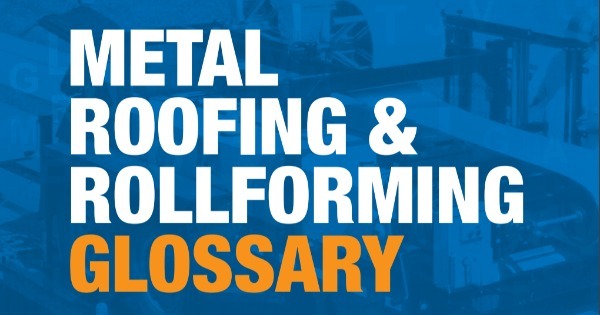
By Katie Bowles, New Tech Machinery.
The metal roofing and rollforming industries are chock-full of terminology. Here’s a glossary for the terms you need to know.
For those outside of, or just getting into, the metal roofing and rollforming trades, the terminology can be difficult to understand and quite daunting to take on. However, it is important that you do understand common operations in metal roofing and the various parts that make up a rollforming machine in order to avoid any problems that arise when these machines or methods are misunderstood. Below consists of a list of definitions and words commonly used in these industries.
New Tech Machinery has remained a leader in the portable rollforming industry since 1991, and we understand that you don’t come into this business knowing everything. We want to make sure our employees, customers, and prospects are well-educated and given all the tools they need to make intelligent decisions.
This comprehensive guide helps simplify the complicated jargon and processes often used in metal roofing and rollforming, and collects it all in one glossary for you to refer to in a pinch. We’ve included:
-
Rollforming definitions: The rollforming process and different rollforming machines.
-
Metal roofing definitions: Parts of a roof and installation accessories.
-
Other metal roofing definitions: Metal roofing types and components associated with metal roofing.
-
Problems with metal roofing and rollforming metal coils or sheets.
Rollforming definitions
Hemming - Process where material is folded back onto itself.
Machinist - A worker who fabricates, assembles, or repairs machinery; a craftsman skilled in the use of machine tools; one who operates a machine.
Metal coil - Metal sheets that have been wound into a large roll. Coils are the most efficient way to transport or store sheet metal.
Metal rollforming - The process of feeding metal, finished, coiled, flat, or otherwise, through a series of rollers where each roller station further manipulates the piece of metal into the desired shape.
Controller - Manual or computer-operated device that makes the machine function and follow the input measurements and preferences.
Drive rollers - What moves the metal through the machine; typically made of metal or polyurethane.
Forming rollers - Forming rollers and forming stations are the individual components the metal passes through to bend or form a desired shape.
Forming stations - The spots at which the metal is bent or manipulated by a pair of forming rollers.
Hydraulic tanks - They aren’t standard on all rollforming machines, but they are commonly added to make the machine faster for higher production or to automate the shears.
Power source - How the rollformer is powered and able to run; usually electric or gas.
Shear or guillotine - Cuts the metal part or component at a specified length.
Post-cut shear - Metal part is formed first in the forming stations and cut afterward.
Pre-cut shear - Metal is cut at the entry end of the machine before it goes through the forming stations.
Metal sheet - Metal formed into thin sheets by a rolling process.
Notching - Cutting different shapes out of sheet metal from the edge of a blank strip to prepare a panel for installation.
Portable rollforming machine - Takes everything a metal rollformer does but in a smaller size so it can be transported easily. A portable rollformer can be powered by gas or electricity, and often comes with an attached or stand-alone decoiler for the metal and run-out tables for finished panels.
Portable roof panel machine - A condensed, transportable piece of machining equipment used to rollform metal sheets/coils into metal roof or wall panels.
Portable seamless gutter machine - A condensed, transportable machine used to rollform seamless gutters (from metal sheets/coils) directly at a job site.
Run-out table - An adjustable height platform used to support and keep roofing panels level as they exit the rollforming machine. Typically supplied in 10’ (3m) lengths.
Slitting - Cutting a sheet of metal into narrower strips.
Tapering - Making a panel narrower at one end.
Metal roofing definitions
Metal roofing - A roofing system made from metal panels or tiles characterized by its high wind/storm resistance, impermeability and longevity.
Metal coils/sheets - Metal roofing starts out as metal coils or sheets, which are then rolled out, cut and rollformed into panels for installation. Metal coils are long, continuous metal rolls that have been treated or coated with paint.
Panels - The rollformed pieces of metal coil that have been shaped into the desired profile/ribbing structure and are ready to be seamed together to form a roof.
Profile - The shape metal panels are formed into; they also determine how the panels fit and connect together.
Rollforming equipment - The machinery, stationary or portable equipment, that forms and shapes the coil or sheets into individual panels.
Seam - The side rib at which two metal panels come together and are connected.
Installation accessories for metal roofing
Butyl tape - Used in a similar fashion as sealant to seal cracks and seams on metal roofs, but it’s in the form of one or two-sided tape and seals by compression. Also used for trimming purposes.
Clamps - Small metal parts that are tightened and attached to the top of the metal roof at its standing seam. These clamps have screws at the top used to attach extra roofing items such as a snow retention system, solar panels, satellite dishes, signs, AC units, etc.
Clips - A concealed anchor that attaches a metal panel to the substrate (roof deck or other material beneath the metal panels) with the use of fasteners. Clips are sometimes referred to as cleats as well.
Fasteners - Any mechanical securement device used to attach the metal roof to the roof deck during installation.
Pipe boot - The cone-like fitting that is installed around an exhaust pipe that exits through the roof.
Rivets - Similar to fasteners but require a special rivet gun to install.
Sealant - Used during installation to seal out water, dirt, wind and other substances that can get into small spaces, making the roof as weather-tight as possible. Typically made of silicone and polyurethane.
Underlayment - The layer of material that goes underneath the metal panels and protects them from water and moisture, ice, high temperature and vapors. Synthetic and felt are the two most popular underlayments used for metal roofs.
Parts of a roof
Cricket - A peaked saddle construction installed between a chimney and the roof surface to help prevent accumulation of snow and water.
Curb - An accessory used to mount additions (AC units, fans, signs, etc.) to provide a level resting structure on a sloped roof.
Deck - A structural component of the roof of a building; the material between the structural components (trusses, joists, purlins, etc.) and the roofing material.
Drip edge - A long piece of metal installed on a roof to keep water away from the fascia and running into the gutter.
Eave - The projecting edge of a roof that extends beyond the supporting wall.
Fascia - A vertical or steeply sloped roof or trim located at the perimeter of a building.
Flashing - Components used to direct water away from critical areas of the roof wherever the roof plane meets a vertical surface, like a wall or dormer.
Gable - The triangular section of a wall between the edges of a sloping roof. The trim occupying this article is typically called “gable trim" or "rake trim.”
Hem - The edge created by folding metal back on itself.
Hip - The inclined external angle formed by the intersection of two sloping roof panels.
Pitch - The slope of a roof, measured by dividing the roof rise by its run.
Ridge - The highest point on the roof, represented by a horizontal line where two roof areas intersect, running the length of the area.
Seam - A joint formed by joining two separate sections of material.
Soffit - The underside of any exterior overhanging section of a roof eave.
Substrate - The surface upon which the roofing or waterproofing membrane is applied.
Valley - The internal angle formed by the intersection of two sloping roof planes.
Other metal roofing definitions
Cool metal roofing - Painted or coated metal panels that reflect the sun’s energy to dissipate heat.
EPDM roofing - Ethylene propylene diene monomer; a synthetic rubber used as roofing material for slow slope or flat roofing applications; common in commercial structures.
Exposed fastener metal roofing - A roofing system where the panels are fastened to the structure through the face of the metal and directly into the roof deck or framing below, and are left visible on top of the panels.
Flange - A projecting rim or edge of a part, usually narrow and of approximately constant width for stiffening or fastening.
Galvalume® - A metal coating that begins as a carbon steel base that is continuously hot-dipped with aluminum and zinc alloys until it reaches a coating consisting of 55% aluminum, 43.4% zinc and 1.6% silicone.
Gauge - Measurement for the thickness of a metal. Smaller gauge numbers indicate thicker metal.
Metal panel seam types - The shape and way two or more metal panels are seamed together vertically, including these types:
Batten panel - Two legs of the panels are rollformed and butted up next to each other, a metal cap goes over the legs to create a seam, and either snaps on or is mechanically seamed into place. Two common types of parts that go over the leg are:
-
Snap cap - Snap over the panel legs without any mechanical seaming.
-
Tee seam - Mechanically seamed into place, resembling a “T.”
Exposed fastener lap seam - The overlapping ends of the lap panels are fastened down to the deck from the top of the panel.
Mechanical lock - Panels that have been rollformed with specific edges that line up with each other. Once the panels are engaged, a hand or mechanical seamer is used to bend the edges and lock the panels together.
Double lock - Features two folds of the seam, resembling a paper clip (180 degrees).
Single lock - One-fold of the seam (90 degrees).
Nail/fastener flange - Similar to a snap-lock panel system, but it’s directly fastened down to the deck of the roof through the male leg of the metal panel instead of using a clip to attach the panel to the deck. Once the fasteners are in place, the female leg of the panel snaps over the entirety of the male leg, which hides the fastener head.
Snap-lock - Panels that have been carefully rollformed with specifically shaped edges, male and female leg, that snap together, thus not requiring hand or mechanical seam during installation.
Panel profile - The shape and way two or more panels are seamed together.
Rib rollers - The “patterns” or striations rollformed into a metal roofing panel between the seams. Common kinds include:
-
Clip relief (stiffening rib adjacent to the seam that allows the space for a clip)
-
Corrugated (larger, constant waving of the metal panel)
-
Flat (no indents between the seams)
-
Ribbed (some shape or indentation between seams)
-
Striated (small, consistent indentation lines in the panel)
Standing seam metal roofing - A concealed fastener metal roof system featuring a raised vertical seam and a broad, flat area between the two panel legs.
Problems with metal roofing and rollforming metal coils/sheets
Camber - Coil that has a stretched edge and curves slightly from side to side.
Chalking - The whitish residue that can become visible on a painted or coated metal surface over time due to degradation of an ingredient in paints, coatings, or other materials.
Fading - The color change in painted metal roofs or walls caused by the breaking down of pigment when substances (water, pollution, chemicals, etc.) in the atmosphere and specific environments react with the pigment.
Oil canning - The perceived waviness of a metal panel and is an inherent characteristic of light-gauge, cold-formed metal products. Oil canning can occur with nearly any type of metal material used in construction.
Panel curvature - What happens when panels don’t come out of the machine in a straight line. There are two kinds:
-
Downhill - If a panel runs downhill, the center of the panel is coming up off the deck while the ends touch the deck.
-
Uphill - If a panel runs uphill, the ends of the panel are coming up off the deck while the middle of the panel is touching the deck.
Panel markings - Marks on the panel that occur during the rollforming process. These may take the form of long streaks or imperfect spots on top or bottom of panels, and are usually caused by trapped dirt or debris in the forming or drive rollers, film on the metal sheet, coil catching a roller or getting stuck in the machine, pieces of plastic caught in the machine, or the metal scraping against the exit or entry shear dies.
Shear misalignment - This happens when the shear is not accurately cutting panels, which could mean the Entry/Exit Shear Dies are misaligned or the shear blades aren’t appropriately positioned according to the profile type.
How to use these terms
Hopefully you have a better understanding of not just the common terms and components used in the metal roofing and rollforming industries, but also their various functions and importance to the machines.
We hope this glossary will become your reference guide when doing research on metal roofing systems and rollforming machines. Whether you want a simple explanation on metal roofing, or are considering using a rollforming machine in your business, this glossary of terms you’ll need to know will help you become a more educated consumer or employee.
New Tech Machinery has been manufacturing the world’s finest portable rollforming machines for 28 years, and we pride ourselves on providing our customers with the resources they need to make educated and smart purchases.
We’re here to answer your questions on portable rollforming machines as well as metal production. If you want more in-depth information, be sure to check out our learning center for the latest metal rollforming resources.
Learn more about New Tech Machinery in their RoofersCoffeeShop® Directory.
Original article source: New Tech Machinery


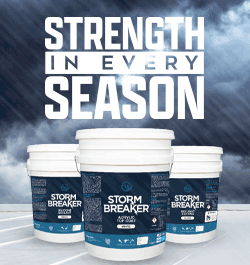










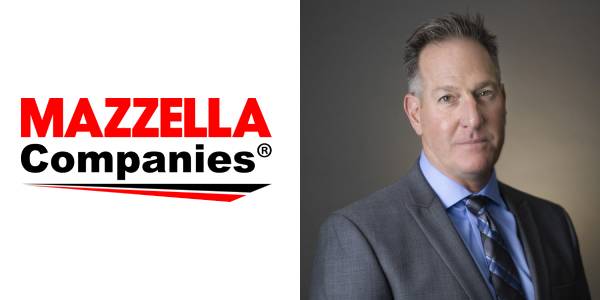
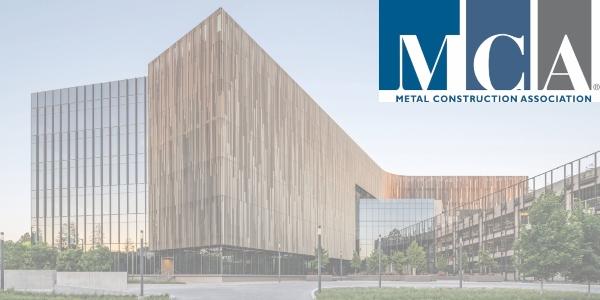






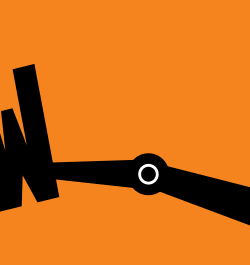

Comments
Leave a Reply
Have an account? Login to leave a comment!
Sign In